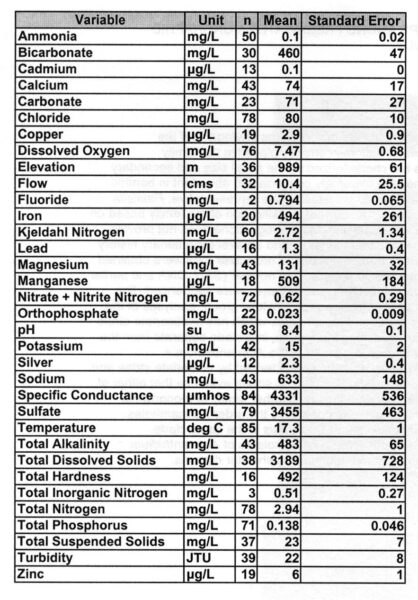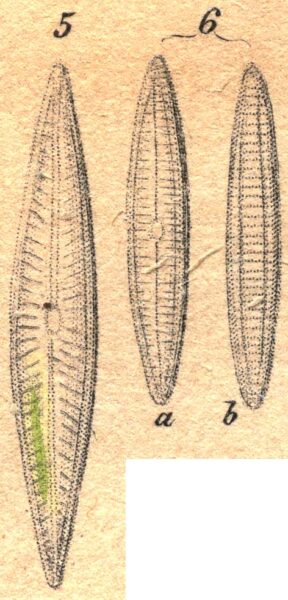Navicula peregrina
-
Category
-
Length Range66-115 µm
-
Width Range15.9-20.0 µm
-
Striae in 10 µm6-7
-
ContributorLoren Bahls - Nov 2011
-
ReviewerMarina Potapova - Nov 2011
Identification
Description
Valves are lanceolate with obtusely rounded ends. The axial area is narrow and widens gradually into a more or less circular central area. The central area is about one-half as wide as the valve. The raphe is weakly lateral, with expanded proximal ends that are slightly deflected to the primary side. Striae are radiate, becoming convergent near the ends and more widely spaced at the center. Areolae are coarse and number 19-21 in 10 µm.
Autecology
Navicula peregrina is common in rivers and creeks on the northern Great Plains, where it prefers alkaline and somewhat brackish waters with elevated concentrations of sodium and sulfate. Here it is most often found with Navicymbula pusilla, Navicula salinarum, Ctenophora pulchella, Tabularia fasciculata, Pleurosigma delicatulum, Nitzschia microcephala, Entomoneis paludosa, Biremis circumtexta, Tryblionella hungarica, Mastogloia elliptica, and Fragilaria famelica.
Patrick and Reimer (1966) report Navicula peregrina from coastal states (Atlantic, Gulf, Pacific) as well as plains states. Lange-Bertalot (2001) reports this taxon as common in Europe along sea coasts and in brackish inland waters.
-
Size Range, µm3
-
Motility
-
Attachment
-
Habitat
-
Colony
-
Occurrence
-
BCG
-
Waterbody
-
Distribution
- Learn more about this
Citations & Links
Citations
Links
-
Index Nominum Algarum
-
North American Diatom Ecological DatabaseNADED ID: 46289
Cite This Page
Bahls, L. (2011). Navicula peregrina. In Diatoms of North America. Retrieved April 24, 2024, from https://diatoms.org/species/navicula_peregrina
Responses
The 15 response plots show an environmental variable (x axis) against the relative abundance (y axis) of Navicula peregrina from all the stream reaches where it was present. Note that the relative abundance scale is the same on each plot. Explanation of each environmental variable and units are as follows:
ELEVATION = stream reach elevation (meters)
STRAHLER = distribution plot of the Strahler Stream Order
SLOPE = stream reach gradient (degrees)
W1_HALL = an index that is a measure of streamside (riparian) human activity that ranges from 0 - 10, with a value of 0 indicating of minimal disturbance to a value of 10 indicating severe disturbance.
PHSTVL = pH measured in a sealed syringe sample (pH units)
log_COND = log concentration of specific conductivity (µS/cm)
log_PTL = log concentration of total phosphorus (µg/L)
log_NO3 = log concentration of nitrate (µeq/L)
log_DOC = log concentration of dissolved organic carbon (mg/L)
log_SIO2 = log concentration of silicon (mg/L)
log_NA = log concentration of sodium (µeq/L)
log_HCO3 = log concentration of the bicarbonate ion (µeq/L)
EMBED = percent of the stream substrate that is embedded by sand and fine sediment
log_TURBIDITY = log of turbidity, a measure of cloudiness of water, in nephelometric turbidity units (NTU).
DISTOT = an index of total human disturbance in the watershed that ranges from 1 - 100, with a value of 0 indicating of minimal disturbance to a value of 100 indicating severe disturbance.

Navicula peregrina
- Valves large, lanceolate
- Striae widely spaced in the central area
- Areolae coarse
- Proximal raphe ends expanded
Valves are large and lanceolate. Striae are more widely spaced striae in the central area than elsewhere. The areolae are coarse. The proximal raphe ends are expanded and deflected to the primary side.
 Diatoms of North America
Diatoms of North America






